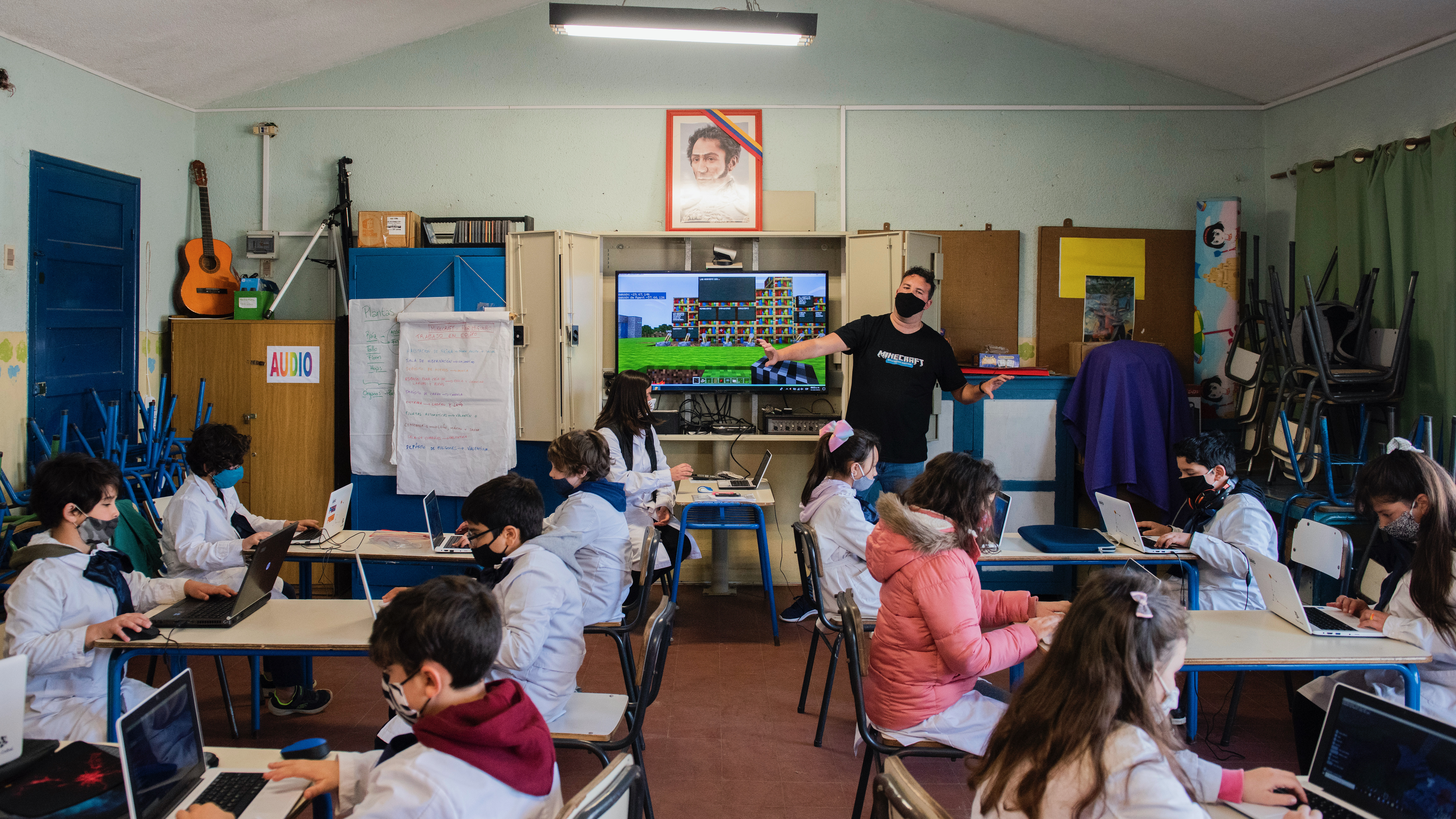Virtual education had a few perks for Uruguayan teenager Martina Vazquez.
The 13-year-old loved how she could keep track of every single assignment at a glance. And if she got lost, she could go back and review recorded classes.
Related: Drought, frost takes a massive toll on coffee crops in Brazil
Martina has had a tablet from the Uruguayan public school system since she was seven. Later, she was upgraded to a computer. It’s all part of a program called Plan Ceibal, which started in 2007. The idea is to put devices in the hands of every public school student — to bridge the digital divide and foster digital literacy within their families.
The program gave Uruguay a huge head start when it came to adjusting to virtual education once the pandemic hit — and has been applauded internationally for its relative success in the country.
The only computer in Martina’s household comes from Plan Ceibal.
“It’s useful for many things, not just school and high school. My mom uses it, we all use it, it is helpful for day-to-day things.”
“It’s useful for many things, not just school and high school,” Martina said. “My mom uses it, we all use it, it is helpful for day-to-day things.”
But Martina said there were some drawbacks, too. Sometimes, an internet glitch would kick out her from class, and she would worry the instructor would think she was playing hooky.
One centralized platform
In March 2020, Plan Ceibal had to quickly switch gears to transition fully to virtual education.
Related: Early stumble as El Salvador starts Bitcoin as currency
Previously, about 10% of students had experience with online learning, and nearly half of the students used at least one online tool from what was available, according to Leandro Folgar, the current president of Plan Ceibal.
“There was a huge penetration of devices on internet connectivity in schools,” he said. “But the culture of virtual education was not there.”
Folgar said they chose to use one centralized platform — that already existed — called CREA. CREA allows students to see all their classes and assignments, and has multiple ways to share homework. It is all in one.
And to make things even more practical, CREA has its own conferencing software in the platform, similar to Zoom.
The strategy was “to guarantee the connection, the contact between students and teachers,” Folgar said.
During the first few weeks of remote learning, only 75% of students joined virtual classes. So, Plan Ceibal and other educational agencies created a TV program.
Related: Award-winning photograph illustrates the US-Mexico border wall threat to biodiversity
The idea was to redirect students to online platforms. And it worked. Over 85% of students and teachers in public schools from primary to secondary education used the virtual platform, according to information from Plan Ceibal. That’s more than 606,000 users in a country of over 3.4 million people.
But it wasn’t without its challenges. Internet connectivity was still a problem for students in rural areas, and for those who couldn’t afford data plans. Part of the solution, Folgar said, was negotiating with internet providers to provide free traffic for education.
“If they had a data plan and they connected, they made a video conference with their teachers. They weren’t paying any money or they weren’t using the gigabytes of their home plan.”
“If they had a data plan and they connected, they made a video conference with their teachers. They weren’t paying any money or they weren’t using the gigabytes of their home plan,” Folgar said.
If they didn’t have internet service at all, students could connect in their school. But in almost half of the households, the only computer available was from Plan Ceibal. Many parents also had to use it for work amid an economic crisis.
Folgar acknowledges that it was a stressful time for families and students, and Uruguayans are still trying to internalize all those experiences.
“The virtual education that was happening in Uruguay was possible, but it wasn’t optimal or great or enjoyable in any way,” he said.
Like being together in the same room
But there were ways in which technology brought joy, a safe space and connection.
Carina Techera is a choir instructor in five different public schools for students ages 12 to 18. For her, when the pandemic started, it was a shock.
“We thought we wouldn’t be able to sing. It was terrible,” Techera said.
Related: Mexico expels Central American migrants to rural Guatemala
She and other instructors across the country got together to develop ways to keep choirs alive.
Since it was impossible to sing together, she decided to coach her students one on one. Then all the classmates would come together and have conversations during video classes on the CREA platform to develop a concept and a song. They’d send audio recordings via WhatsApp.
With the help of students, Techera weaved the sound and images together in a video. The outcome is an assembly of over 70 voices that sound seamlessly as if they were together in the same room.
Unlike other classes, choir wasn’t an obligation. When students missed class, Techera would find out later that they struggled with depression, death of a family member or financial troubles at home. Choir was a lifeline. When everybody was having a bad day, they would start writing a rap.
Of course, nothing could replace the energy of being together in the same room. Techera’s choirs reunited in person when students went back to school in Uruguay in June. The technology was important, but it was the human will to connect, Techera said, that made it work — and could lead the path forward to more innovations.
Editor’s note: Martina is the reporter’s cousin.
